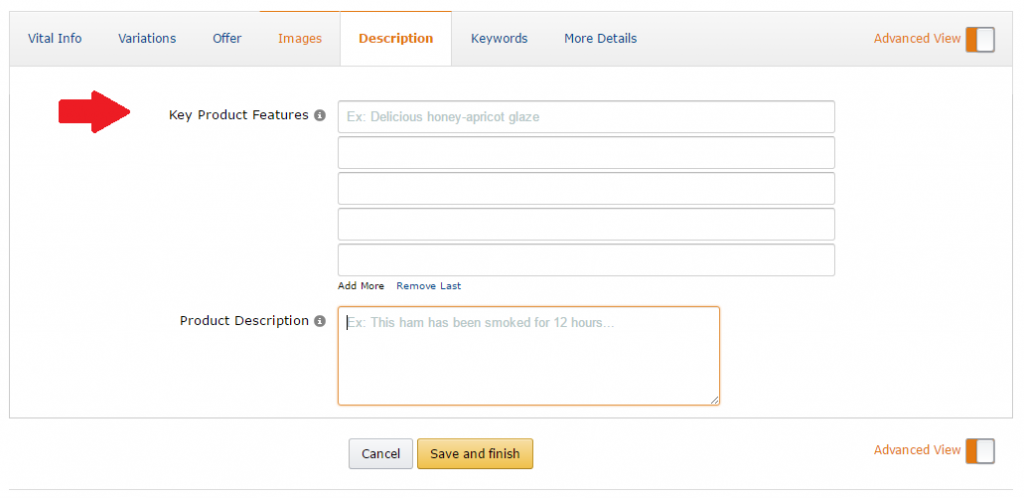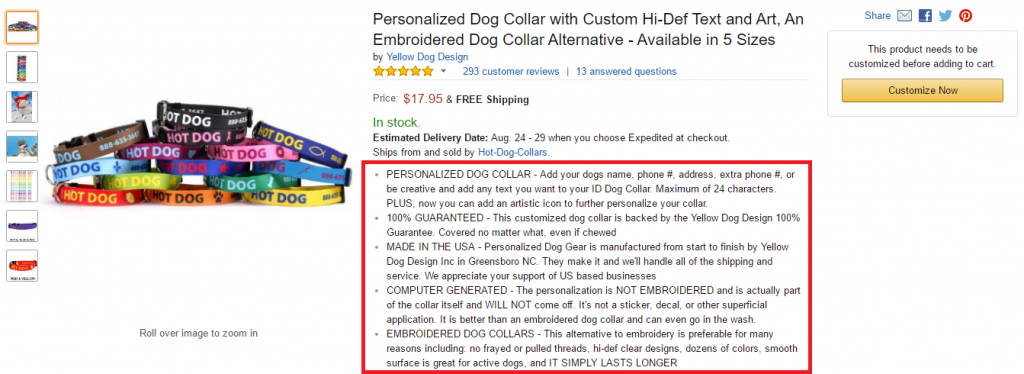Optimizing Amazon Content with Product Descriptions

Optimizing your Amazon content is an intentional strategy that can have a direct impact on your product’s organic search ranking.
Unfortunately, there are many misconceptions about the Amazon SERP and how it works. The Amazon search algorithm is somewhat of a black box and sellers are still learning what factors drive the Amazon SERP and how each can impact it.
What we’re aiming to do is share some of our most recent findings from our testing and from what we know to be true on how Amazon products rank.
In the following blog series, we will dissect each component of a successful product content submission strategy. From titles to images and descriptions, we will showcase the best SEO practices, resources, as well as how to avoid common errors.
Note: Check back as we continue to build out the series below:
Similar to Google’s search algorithm, Amazon has it’s own infrastructure that determines where your product will rank. The best way to think about Amazon’s search ranking is to envision yourself as the shopper.
When shoppers are searching for a pair of “black leather boots”, it’s likely they will type their query in the Amazon search bar rather than filter through the categories section. Keywords are then matched against the search terms marketer’s have entered for their product.
Because “search” is the way most shoppers look for products, it is important to develop product titles and descriptions with all the necessarily product field optimizations to stand out and rank against competitors.
According to Amazon, “The number of views for a product detail page can increase significantly by adding just one additional search term – if it’s a relevant and compelling term.”
Other factors such as price, availability, selection and sales history will also help determine where a product will appear in the search results. Typically, products with higher sales will be placed higher up on the Amazon ranking search list. The more sales, the better chances of higher ranking.
In part two of this series we will take a closer look at one of the most influential factors for Amazon ranking, Product Descriptions & Features.
The Amazon product detail page bullet points aka “Key Product Features” section is located under the “Descriptions” tab (as seen below).
Effective bullet points are known to increase sales on Amazon. The more descriptive the bullet points for your product pages- the more you will sell on Amazon. Amazon shoppers rely pretty heavily on bullet points to gather product information.
Pro-Tip: Remember, Amazon chooses bullet point information based on aggregate seller data.

Best Practices for Key Product Features:
Below is an example of a well-built out key product feature section for an Amazon Product Detail page:

Product Descriptions
Every product detail page should also describe the major product features, such as size, style, and what the product can be used for. Amazon encourages sellers to include accurate dimensions, care instructions, and warranty information and use correct grammar, punctuation, and complete sentences.
Do not include any of the following types of information:
Below is an example of an optimized product description for dog collars:

1) Avoid Double Dipping Keywords:
A question we get from a lot of sellers is: Should I double dip keywords in my content and in the back-end?
“Technically, you shouldn’t have to. If you have a keyword in the title – you are not going to rank any better if it’s in the product description, the title, and the back-end. If the content is customer facing – you run the risk it could look like spam and from the back-end perspective – you are essentially just wasting character count,” David Cooley, Manager, Marketplace Channels at CPC Strategy said.
2) Answer Seller Questions:
If a seller receives questions from their potential customers about products (especially if they are the same questions over and over again) – that’s probably an indication to include an answer to those questions in the content.
For example: If you advertise cell phone cases and your shoppers keep asking if it will fit the new iPhone6, then you should probably add that information into your content section.
3) Focus on the 4 Content Components:
There are 4 main content components to focus on when it comes to selling products via Amazon including: titles, bullet points, product description, and back-end search terms.
Of the weighing factors for discoverability, we rank them: 1. reviews, 2. fulfillment method, 3. price, and finally – 4.content. Sellers should focus on how to optimize and build out each piece of content thoroughly.
4) Avoid Claims & Offers:
When sellers build out their content (bullet points or descriptions) they should not include any “offer” specific content.
Sellers can’t put offer info in their bullet or product description such as “buy 1, get one free” or (for example) make a specific “health claim” for supplements. If you do include claims or special offers in your description – its technically considered an Amazon policy violation and could lead you to a suspension.
5) Remember Content is Aggregated:
Amazon content is not always based on just one seller that submits content. Amazon aggregates relevant product information across sellers who are selling the same Amazon item (as identified by ASIN or UPC).
Amazon compiles all the submissions into consideration and creates the best title or bullet points – but there is no guarantee the title you type in the back-end is going to be exactly the same public facing.
6) Maximize Your Character Count:
Advertisers should maximize the character count for their product’s title, bullet points, product descriptions, back-end search terms.
By filling out the product description & bullet points completely it helps the product rank higher. Additionally, it also helps with conversions because customers are going to better understand what your product is.
Note: There are different bullet point / character maximum counts for vendors vs. 3P sellers.
“Because your product description is indexed for search, the more information in your back-end search terms, title, the more content you will get indexed for search. This will also help you rank better and for more keywords,” Cooley said.
How to Improve Your Amazon Ranking with Title Optimization
